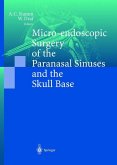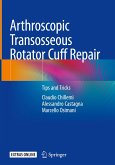This unique text, which fills the gap between shorter texts containing little explanatory material and the advanced compendia for those with a good working knowledge of neurological disorders, is intended for the novice and those physicians who require an update on the diagnosis of neurological disorders. To understand the symptoms and signs requires a good knowledge of the gross anatomy of the central nervous system and supporting tissues. This is achieved by the liberal use of the author's own detailed diagrams backed up with concise and practical guidance on diagnosis and treatment as well as appropriate case studies. This long awaited second edition of a highly popular guide reflects recent advances in the subject such as computed tomographyand MRI which have replaced more invasive examination techniques. The tutorial approach will present readers with an authoritative view of the fundamentals of neurology in practice.
The majority of doctors are ill at ease when confronted by a patient with a neurological problem. Candidates for qualifying examinations and higher diplomas dread that they will be allocated a neurological 'Iong case'. This is a serious reflection on the adequacy of training in neurology. It is still possible in some medical schools for a student to go through the entire clinical course without an attachment to the neurological unit. Increasing competition for teaching time has led to the situation where in most US medical schools, and at least one new medical school in the UK, a two-week c1inical attachment to the neurology service is considered adequate. Those fortunate enough to attend a postgraduate course find a minimum of 3 months' intensive training is necessary before any confidence in tackling a neurological problem is achieved. Unfortunately, neurological textbooks seldom seem to recognize the intensely practical nature of the subject. There are many short texts that achievebrevity by the exclusion of explanatory material; these are difficult to read and digest. At the opposite extreme are the neurological compendia, often unbalanced by excessive coverage of rare diseases and all based on the assumption that patients announce on arrival that they have a demyelinating, heredofamilial, neoplastic etc. disorder. These texts are useful only to those who already have a good working knowledge of neurological diseases.
The majority of doctors are ill at ease when confronted by a patient with a neurological problem. Candidates for qualifying examinations and higher diplomas dread that they will be allocated a neurological 'Iong case'. This is a serious reflection on the adequacy of training in neurology. It is still possible in some medical schools for a student to go through the entire clinical course without an attachment to the neurological unit. Increasing competition for teaching time has led to the situation where in most US medical schools, and at least one new medical school in the UK, a two-week c1inical attachment to the neurology service is considered adequate. Those fortunate enough to attend a postgraduate course find a minimum of 3 months' intensive training is necessary before any confidence in tackling a neurological problem is achieved. Unfortunately, neurological textbooks seldom seem to recognize the intensely practical nature of the subject. There are many short texts that achievebrevity by the exclusion of explanatory material; these are difficult to read and digest. At the opposite extreme are the neurological compendia, often unbalanced by excessive coverage of rare diseases and all based on the assumption that patients announce on arrival that they have a demyelinating, heredofamilial, neoplastic etc. disorder. These texts are useful only to those who already have a good working knowledge of neurological diseases.
...what makes this book interesting is the extremely sober and concise style in which its subject is presented...This book is excellently structured and its descriptions are clear and informative...can be recommended without reservations, primarily to neurologists, but also, and with the same conviction, to neurosurgeons. Neurosurgical Rezension.







